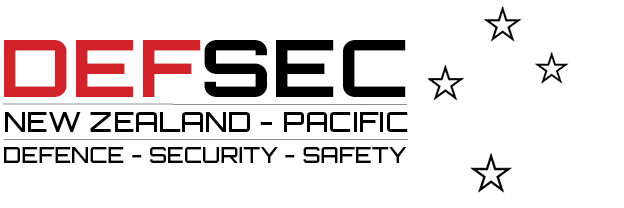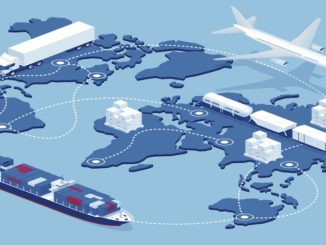
With the Afghanistan withdrawal allowing the US to sharpen its focus on the Indo Pacific, former Defence Minister Dr Wayne Mapp considers New Zealand’s position in the context of an energised or expanded Quad grouping.
This article is part of Line of Defence Magazine’s Future Navy Series, featuring expert commentary on the capability decisions that will shape the future Royal New Zealand Navy.
The end game in Afghanistan proved to be as traumatic as was ever feared. The sight of thousands of panicked Afghans at Kabul airport, with the ultimate denouement of ISIS-K terror bombings seemed a stark illustration of the impotence of the West. It was an ignominious end to the 20-year intervention by the US-led coalition, which at its peak involved more than 50 nations.
Naturally there were many commentators, both left and right, who saw this as the end of American leadership of the West. That hereafter the nations of the west would be aimlessly absorbed in their own internal morass while more capable and confident nations would assume the mantle of the true dispensers of power. These nations, China and Russia, would be able to impose their authoritarian approach across the world, most particularly in Asia.
Does the final failure in Afghanistan presage this outcome? That the West is in inevitable decline and the world has become a more dangerous and uncertain world for all who believe in a more liberal world order?
There is no doubt that the ideological contest has become much sharper in recent years. But this has had precious little to do with Afghanistan, it is a function of China’s rise.
It is worth restating that the fundamental facts of great power relativities remain. The United States is the most powerful economic and military actor in the world. It is a continent-spanning nation with nearly 400 million people.
Political discourse and government competence will be a variable factor changing from administration to administration, perhaps more evident in recent years. However, it is not immediately obvious that the United States is suffering such a fundamental loss of confidence that marks the current era apart from previous times of political disturbance as existed two generations ago in the 1960s and 1970s.
Most pertinent for New Zealand is the fact that the United States has sovereign territory right across the Pacific. In this regard, World War Two, and in particular, the Pacific War, casts a long shadow.
Even if the United States reduces its global footprint, the last place this would occur is in the Pacific. It is quite possible that the United States presence in the Pacific might increase as resources are shifted into this region. There is a deep consensus in the United States, right across the entire body politic, that the United States must be the pre-eminent power within the Pacific.
These days the concept of the Pacific has been extended to the Indo Pacific. When contrasted to the prior concept of the Asia Pacific, it has a distinctly more maritime flavour. The Asian continent is dominated by China; the Indo Pacific is not.
For China, this means a continuous Belt and Road from the Pacific to the Arabian Gulf. China, Pakistan, Afghanistan and Iran constitute an unbroken land bridge, so it would not be surprising if China spends political and economic capital to make this a strategic reality.
In contrast, the idea of the Indo Pacific rests on securing the maritime routes of the Indian and Pacific Oceans. Each of the four nations of the Quadrilateral Security Dialogue (Quad) nations, India, Australia, Japan and the United States, have an extensive maritime heritage. To a greater or lesser extent, all of them are open, internationally connected democracies. The Quad nations have also developed broader connections with the Quad Plus group, which includes New Zealand.
The Quad nations have been active in organising naval exercises as their preeminent defence activity. The naval combat capability of the four Quad nations is around three times that of China. However, it is not just a question of counting the number of platforms, it is also a matter of assessing the overall naval capability of each of the Quad nations and their level of training and doctrine. Unlike China, each of the Quad nations has long experience in naval doctrine.
Such a level of overmatch may seem impressive, but it is not as if the Quad nations will act in concert in the manner of NATO. Their interests are too diverse for that. There are many potential flash points in the Indo Pacific that would only engage the interests of two or three of the Quad nations.
The complicating point for China is that it will not be able to definitively determine on any particular issue how many Quad nations would choose to be engaged. Depending on the location of the conflict and the specific issues in play, it is also quite possible that other nations may join the Quad nations. Some of these, notably Singapore, South Korea and Vietnam, as well as other ASEAN nations, have sufficient naval capability to be able to make a real difference.
The end of the Afghan conflict, at least in so far as it involves the United States and its partners, will mean that the United States is able to refocus its efforts. Unlike the difficult mountainous terrain of Afghanistan, the maritime domain of the Indo Pacific is where the United States and its partners have a decided military advantage. Counterinsurgency (COIN) warfare does not play well to the technological strengths of the United States.
Immediately after the final departure of United States forces from Afghanistan, Greg Sheridan, writing in The Australian, pronounced COIN dead, not just for the United States, but also for Australia. The open oceans of the Indo Pacific will enable the United States Navy to effectively use its extraordinary level of military competence in any potential conflict. The same might also be said of the other Quad nations.
One of the Quad nations, Australia, is New Zealand’s only formal ally. The dominant Quad nation, the United States, remains an extremely important partner. It is inevitable that there will be an expectation that New Zealand will be a fully engaged partner with the Quad nations, able to contribute meaningful military capability.
This implies that strategic pressure upon New Zealand will increase in coming years. New Zealand will have to decide the extent to which it wants to be engaged with the Quad nations in terms of their unity of action.
Looking to the future means assessing the nature of the military capabilities that will be useful in the maritime domain. The P8 Poseidon aircraft, the ANZAC frigates, and the new sustainment ship, HMNZS Aotearoa particularly stand out. As the NZDF notes, the Aotearoa is a “technologically enhanced asset that can add real value to combat operations.” As readers will have noted with the UK Carrier Strike Group, led by HMS Queen Elizabeth, two of the nine ships in the group were RFA tankers, Tidespring and Fort Victoria. The Aotearoa would have comfortably fitted within such a carrier group. More pertinently the Aotearoa is one third of the tanker capability of the Australian and New Zealand navies.
The ANZAC frigates are midway through their life, with the major upgrade of their combat systems having been just completed. Although HMNZS Te Kaha has already been in service for 24 years, it is likely to remain in service through to the mid 2030s. HMNZS Te Mana could potentially be in service through to 2040. The Offshore Patrol Vessels and HMNZS Canterbury will need to be replaced before 2035.
The decision train to replace all these ships ought now to be in place. One of the goals should be to achieve a better balance within the Navy, to have fewer classes of ships, even if within the main class, there is a mix of high and low capability.
The choice that New Zealand makes in replacing the ANZAC frigates could have a significant bearing on how Zealand positions itself in relation to its partners. The decision is not only one for the appropriate structure for the Navy, it also has a bearing on how New Zealand will continue to implement and expand its independent foreign policy as it applies to the Indo Pacific.










Thank you Wayne for a thoughtful and reflective piece. I particularly support your final comments, including “The decision train to replace all these ships ought now to be in place. One of the goals should be to achieve a better balance within the Navy, to have fewer classes of ships, even if within the main class, there is a mix of high and low capability.”
Dr Mapp’s analysis of the strategic environment accords with what most rational commentators would see as the Asia-Pacific reality for the foreseeable future. His background as a former defence minister lends great weight to his arguments, at least as far as I’m concerned. As far as potential capability strategies are concerned, in this article he is much nearer the mark than on previous occasions on which he has advocated that the Canadian AOPV form the centerpiece of our naval fleet. However, I challenge his position on the longevity of the Anzac class frigates. the original design life was 30 years (TE KAHA is thus 80% through her original service life, TE MANA slightly less). They are being extended, at significant cost, to 35 years. To extend them beyond that would entail an additional, technically risky, and disproportionately expensive life extension, while perpetuating the two ship frigate fleet that we know from operational research (carried out by VUW and the Defence Technology Agency) is unsustainable from a work force perspective. It might be observed that the RAN is considering similar extensions for its Anzac class, but they have little choice, as the withdrawal of their ships is tied to the delivery schedule for the Hunter class frigates to which they are committed. Cost, and this technical risk, is also slightly less of a problem for them than it is for us.
Dr Mapp says that the decision train to identify replacements should now be in train – on that I wholeheartedly agree, and I believe it actually is.
Obviously the AUKUS deal will mean more pressure on the New Zealand government to make it clear how the ANZAC frigates will be replaced. Readers will have noted from my article, which was written before the announcement of AUKUS, that I had already concluded that New Zealand will not be able to get away with an all OPV fleet, hence my reference to a high low mix.
I believe that the government will need to make its intentions clear before the next election. Alliance realities will now make this an imperative.
With reference to the high low mix, I had in mind the Type 31, although I did not actually state that in the article. The Type 31 can be built as either a full combat capable frigate, or as an advanced OPV. Four Type 31’s in a high low mix could replace both the ANZAC frigates and the two OPV’s. Given AUKUS, it makes sense to buy from one of these nations, with a decent amount of local work.
It is time for this debate to move out from the narrow confines of defence professional media into the wider domain. Make no mistake, how New Zealand determines the shape of our next navy will be keenly noted by our closest allies and partners, most especially Australia.
A refreshing perspective. Type 31 in varying levels of configuration is indeed an option. However, in the time frame in which the Anzac class will need to be replaced, the UK is developing the Type 32 concept, which will incorporate another and more advanced level of modularity – closer to that which I postulate in an article in the first edition of the Professional Journal of the RNZN (Dec 20). I hope that NZ Defence policy and capability staffs have the bandwidth to track this development – and it is a question of bandwidth, they are more than capable of accurately assessing the merits of such concepts. It could even be worth considering the attachment of a capable officer to the UK MOD to work with the Type 32 project team, as was done in the early days of the Type 26 project. As I’ve said elsewhere, and as Dr Mapp identifies, the main thing is that the thinking should be underway now.